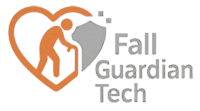Understanding Aging & Fall Prevention: Key Physical and Mental Changes
This chapter helps older adults and their caregivers understand the physical and mental changes that come with aging, specifically how these changes can increase the risk of falls. The goal is to provide a foundation for developing effective fall prevention strategies. While aging is natural, the heightened fall risk it brings can be significantly reduced with proactive steps.
Section 1: How Aging Affects Your Body and Increases Fall Risk
Getting older involves natural declines in various bodily systems, directly impacting balance, walking stability, and reaction time. These changes significantly raise the chance of falling.
- Muscle, Bone & Joint Vulnerability:
- Muscle Loss & Unsteady Gait: Age-related muscle loss (sarcopenia) and weakening lead to reduced strength, particularly in the legs. This makes getting up, walking, and maintaining balance harder, increasing fall risk due to instability.
- Osteoporosis & Broken Bones: Lower bone density makes bones fragile. Even a minor fall can easily cause fractures, especially in the hip or spine (vertebral compression). These fractures cause intense pain, severely limit mobility, and can be life-threatening.
- Stiff, Achy Joints: Joint cartilage wears down and loses flexibility, causing pain, stiffness, and limited movement. This impacts daily activities and balance/coordination.
- Nerves & Senses: Less Awareness, Slower Reactions:
- Declining Balance Control: Age-related declines in inner ear (vestibular) function, sense of body position (proprioception), and visual processing make it harder to sense and adjust to posture changes. This leads to losing balance when standing, walking, or moving positions.
- Slower Reaction Times: Slower nerve signals mean older adults take longer to react to environmental changes. This makes it harder to react quickly enough to catch themselves or minimize injury during a fall.
- Vision & Hearing Loss: Common age-related vision problems (cataracts, glaucoma) and hearing loss impair awareness of surroundings and hazards. This includes not seeing obstacles clearly or missing warning sounds, significantly increasing fall risk.
- Heart Health & Energy Levels:
- Blood Pressure Drops (Orthostatic Hypotension): Many older adults experience sudden blood pressure drops when standing up, causing dizziness, lightheadedness, or even fainting – a major fall trigger.
- Lower Metabolism & Stamina: Metabolic changes can affect nutrient absorption and energy levels, resulting in reduced overall strength and endurance. Feeling easily fatigued can compromise safety during daily activities.
- Bladder Changes:
- Frequent Nighttime Urination & Incontinence: Needing to get up often at night (nocturia) or having urges to reach the bathroom quickly can lead to rushing, especially in the dark, greatly increasing fall risk.
Section 2: How Mental & Cognitive Shifts Create Fall Prevention Challenges
Beyond physical changes, mental and cognitive well-being also significantly impacts fall risk.
- Changes in Thinking & Judgment:
- Reduced Focus & Decision Making: Memory, concentration, judgment, and problem-solving skills can decline. This makes it harder to spot hazards like wet floors or uneven sidewalks or to multitask safely (e.g., walking while carrying items), increasing fall risk.
- Impaired Spatial Awareness: Cognitive challenges may affect understanding of space and surroundings, making it easier to become disoriented or bump into objects, especially in unfamiliar places.
- Emotions & Behavior:
- Fear of Falling: Experiencing or witnessing a fall can create a powerful fear of falling again. Ironically, this often leads to avoiding activities and social interaction, accelerating physical decline and creating a vicious cycle that actually increases fall risk.
- The Impact of Anxiety & Depression: Negative emotions can cloud thinking, reduce alertness, and sap motivation for preventative activities like exercise or safety modifications.
- Medication Side Effects:
- Many older adults take multiple medications for various conditions. However, side effects from drugs like sedatives, sleeping pills, blood pressure medications, and some antidepressants (e.g., dizziness, drowsiness, balance problems, or confusion) can directly increase fall risk.
Section 3: Taking Charge: Action Steps to Prevent Falls
Understanding these age-related changes is the crucial first step to preventing falls. By actively managing health, adapting lifestyles, and engaging with resources, older adults can significantly boost their safety, reduce fall risk, and lessen the severity of injuries if a fall happens.
- Stay Positive & Engaged: Maintaining an optimistic outlook helps navigate aging’s challenges and encourages active participation in safety measures and social/physical activities.
- Proactive Health Management: Adopt healthy habits: balanced nutrition, smart medication management (discuss side effects!), and regular exercise tailored to abilities to improve strength, balance, and stamina.
- Seek Professional Guidance: Don’t hesitate to talk to doctors, physical therapists, or other healthcare professionals about fall concerns, mobility issues, or anxiety. Get expert help developing a personalized fall prevention plan.
